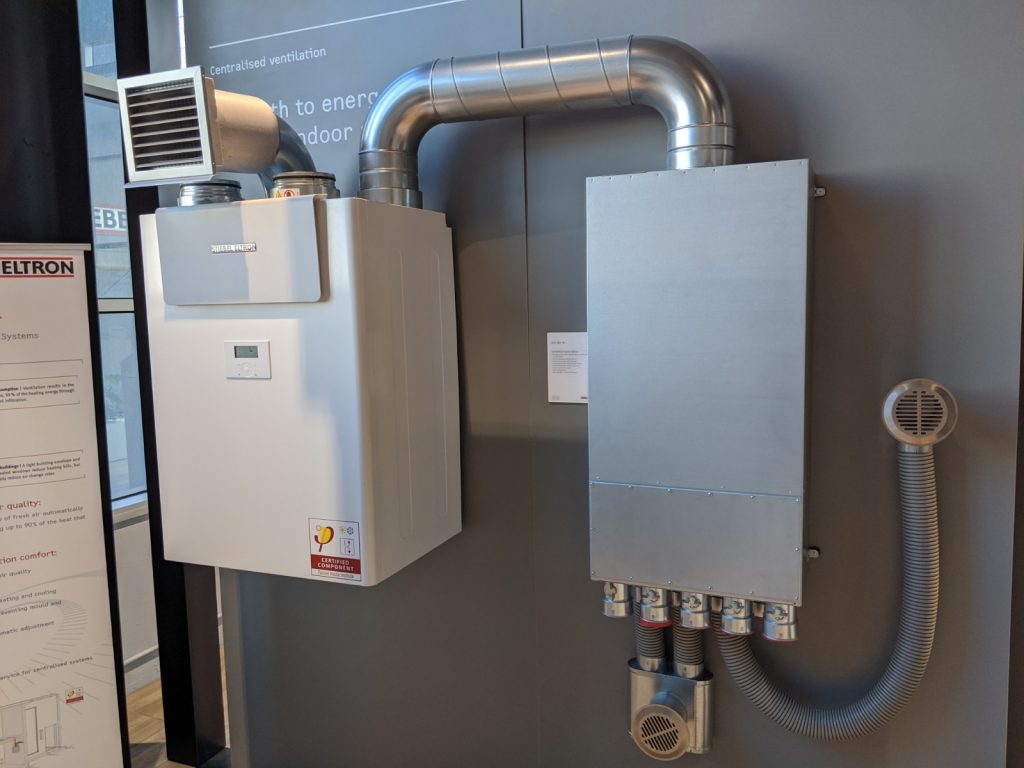Frequently Asked Questions About HRV Answered
The All-Inclusive Overview to the Uses of Heat Recovery Ventilation in Modern Structures
Heat Recovery Ventilation (HRV) systems represent a considerable improvement in building innovation (HRV Heat Recovery Ventilation). They supply an approach for exchanging stagnant indoor air with fresh exterior air while minimizing power loss. This method not only improves indoor air quality however additionally adds to energy efficiency in both residential and industrial structures. Recognizing the different applications and benefits of HRV can disclose its critical duty in contemporary design and sustainability initiatives. The effects of this innovation are worth discovering even more
Recognizing Heat Recovery Ventilation Equipments

Numerous modern buildings focus on power efficiency, comprehending heat recovery air flow (HRV) systems is crucial for maximizing indoor air quality and lowering power usage. HRV systems function by moving warm from stagnant indoor air to inbound fresh air, successfully preserving comfortable indoor temperatures while lessening energy loss. These systems are composed of a warmth exchanger, followers, and ductwork that facilitate the flow of air. Throughout winter season, HRV units record and reuse warm from the outbound air, while in summer, they can help cool incoming air. By continually exchanging air, HRV systems likewise minimize humidity and the focus of indoor toxins. Correct installment and maintenance of HRV systems are vital for their effectiveness and performance in boosting general structure efficiency and comfort.
Benefits of Heat Recovery Ventilation
Heat recovery ventilation systems provide countless advantages that enhance both power efficiency and interior air high quality in contemporary structures. By recording and reusing power from exhaust air, these systems significantly decrease heating & cooling costs, leading to reduced energy consumption. They maintain a steady flow of fresh outdoor air, minimizing the danger of interior air contaminants and irritants. This continual exchange aids manage moisture degrees, avoiding mold and mildew development and ensuring a much healthier living atmosphere. In addition, HRV systems add to sustainability objectives by lowering overall carbon footprints. Their capacity to optimize ventilation without sacrificing thermal comfort makes them a valuable enhancement to contemporary structure layout, promoting both financial and ecological benefits.
Applications of HRV in Residential Structures
As house owners significantly focus on power effectiveness and indoor air quality, the applications of warmth recovery air flow (HRV) systems in domestic buildings have come to be extra widespread. HRV systems are especially useful in firmly sealed homes, where maintaining fresh air circulation is important for preventing dampness build-up and indoor pollutants. They successfully transfer warmth from outbound stagnant air to inbound fresh air, lowering power prices related to heating & cooling. In addition, HRVs can enhance convenience levels by regulating humidity and temperature. They are also versatile for various property designs, including single-family homes and multi-unit structures. In general, incorporating HRV systems sustains lasting living practices while guaranteeing a much healthier interior setting for owners.
HRV in Commercial and Industrial Settings
In commercial and commercial settings, the execution of warm healing air flow (HRV) systems has actually become significantly essential for enhancing energy effectiveness and maintaining air top quality. These systems effectively move warm from exhaust air to incoming fresh air, reducing index the demand for additional heating or air conditioning. This not just lowers energy expenses yet also adds to sustainability efforts. Industries such as production, warehousing, and office complex benefit substantially from HRV systems, as they aid regulate temperature level and moisture levels, making sure a comfy and efficient atmosphere. Furthermore, HRV systems help in eliminating pollutants and excess wetness, boosting indoor air top quality. As regulations around air high quality end up being stricter, the adoption of HRV innovation is most likely to grow, making it an essential component of contemporary industrial and commercial infrastructure.
Future Fads in Heat Recovery Ventilation Modern Technology

Often Asked Questions
Exactly How Does Heat Recovery Ventilation Impact Indoor Air Quality?
Heat recovery ventilation considerably improves indoor air top quality by constantly exchanging stale interior air with fresh outdoor air while recovering power. This process decreases toxins, preserves excellent humidity levels, and ensures a much healthier setting for passengers.
Can HRV Systems Be Mounted in Existing Structures?
HRV systems can certainly be set up in existing structures. Retrofitting might need modifications to ductwork and ventilation layouts, but it considerably boosts power efficiency and interior air quality, making it a practical alternative for older structures.
What Upkeep Is Needed for HRV Systems?

Exist Certain Climates Where HRV Is Extra Efficient?
Heat recovery ventilation systems are especially efficient in environments with significant temperature level differences in between periods. These systems optimize energy effectiveness by recouping heat from exhaust air, making them excellent for both cool and reasonably cozy atmospheres.
How Do HRV Systems Affect Energy Costs?
